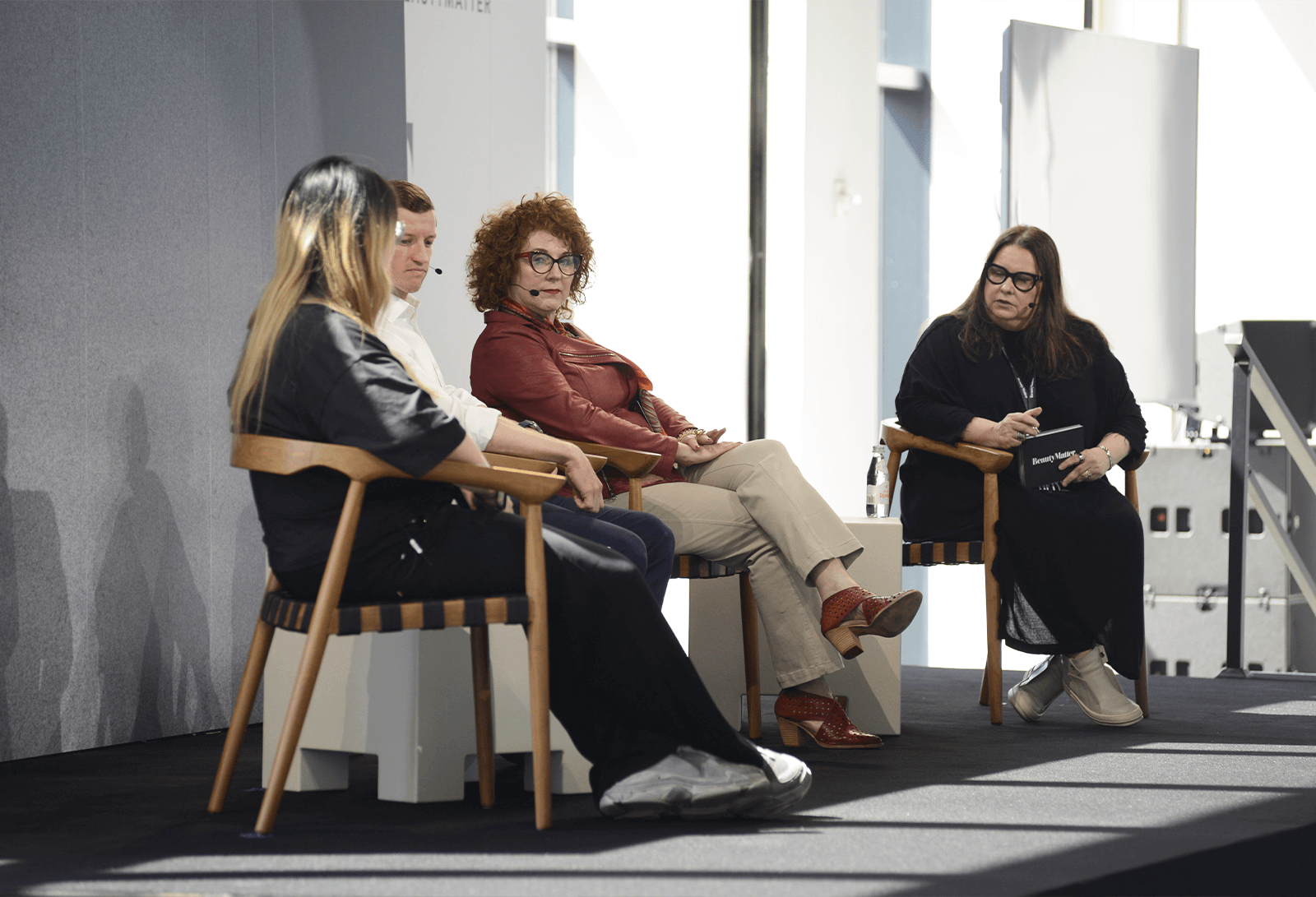Fragrance is having a big moment. With record sales, new launches, and strategic acquisitions, fragrance players from luxury to mass have been on a tear. In other categories that have seen this much growth, investors would be chomping at the bit to place their bets. At BeautyMatter’s FUTURE50 Summit, we held a panel to explore current category dynamics, where the opportunities lie, and the nuances that make fragrance one of the most challenging to scale.
BeautyMatter founder and CEO Kelly Kovack opened the panel referencing the niche brands and their visionary founders who started rewriting the fragrance playbook and pushing the boundaries of haute perfumery in the early aughts, changing the industry forever. There was a ground zero moment in the niche fragrance movement that happened at Barney’s New York when Bettina O’Neill launched Frederic Malle, Byredo, and Le Labo that created the foundation for the category growth we are seeing today.
“The brilliant thing about Frederic is that he recognized the perfumers that no one had ever spoken about before,” says O'Neill, Senior Vice President of Business Development, Merchandising & Wholesale at Scentbird. “He had them on the bottle, he had photos in his shop, and he really made a tribute to them.”
His fragrances were well over $200, and nothing else was priced that high. The pricing strategy was based on the cost of ingredients with each fragrance retailing at a different price. O'Neill admits she pushed back at the time but said Frederic was always right.
“The best founders are the ones who are unreasonable, and I say that with love because they're the ones who have a vision,” says O'Neill. She appreciates founders who have that real passion and are not compromising.
Over the last twenty years, we’ve seen an explosion in the niche fragrance category. The way customers interact with fragrance has also shifted dramatically. Most offerings are unisex. Eau de parfum is the format of choice. Powder and solid perfumes are big, which speaks to shifting consumer preferences.
“Gone are the days where you had one fragrance on the dresser and that was what you wore all the time,” says Harry Richards, Investment Director at Manzanita Capital. “Now people have a scent wardrobe. They have different fragrances for different occasions, moods, and different times of the year. So I think how customers interact with fragrance has changed.”
Investment and Scale
From an investment perspective, it’s a tough category. There’s more early-stage activity now, which is a consequence of brands the $5 million to $15 million revenue mark where investors are interested. UK-based private equity firm Manzanita Capital has been an active investor in the category for decades, acquiring the French scent and candle company Diptyque in 2005, taking a majority stake in Byredo in 2015, and holding it until selling a majority stake in 2022 to Puig. Most recently, Manzanita Capital purchased a majority stake in Brooklyn-based fragrance house D.S. & Durga.
“The distribution landscape has shifted very dramatically over the last 20 years,” says Richards. “The challenges with the department store model are well-documented, and I don't think of online as being as big a boon to fragrances [as it is] to other categories.”
Distribution is the biggest hurdle to scaling a fragrance brand. Indie brands that are scaling fast are in China or in North America where they leverage exclusive relationships with Sephora or Ulta Beauty to build a $100 million brand in three to five years. Richards shares building a fragrance brand of this size requires an international footprint and building a network of distributors, which often slows things down. It also takes a lot of the control out of the brand’s hands—and a huge chunk of the brand’s margins, too.
What are investors looking for in a fragrance brand? Richards says the product, team, and a great founder are very important. Brands also need a clear point of differentiation, a reason for people to buy into a brand's universe. Investors are also looking for brands that can keep customers coming back repeatedly, whether through more offerings or bodycare products.
Richards recommends going narrow and deep. Strong DTC revenue provide good margins but focusing on a few key wholesale partners and getting the formula right can help build a brand’s market share. Having those proof points to show that your brand story resonates is meaningful.


Role of China
China has emerged as new market driving fragrance growth with niche domestic fragrance brands proving themselves to disruptors and attracting international investment. Documents is representative of this niche fragrance movement that's currently happening in China and one of the 2024 FUTURE50 brands.
Yueyi Ling, co-founder of Documents shares, “The greatest advantage of Documents is that we are more familiar with the customer. At the very beginning of our brand, we decided to open up a flag shop directly in Shanghai to get access to our real customers face-to-face.”
C-beauty fragrance brands differ from Western brands in how they approach innovation. Documents invented the concept of “bold zen,” which means a fresh return to the essence of Chinese luxury.
“We feel like those kinds of things are representative of the style of the younger generation of China, who is brave and willing to try anything, and they want to show their personality, inclusiveness, and individual differences. Because we are a Chinese perfume company, we are always trying to translate the Chinese traditional culture in a contemporary and attractive way.”
The Consumer and Trends
TikTok is driving some consumer interest. Millennial and Gen Z consumers love fragrances of the gourmand, vanilla, cherry, apricot, and peach variety.
“Fragrances are going from extremes. They're going from skin scents and hair and body mists to the other extreme of the 'beast mode' oud,” says O’Neill. “To have that all trending in the same time period with everyone liking all things is really very interesting and speaks to the move away from signature scents. They want a variety. They want to change their fragrance three times a day, and they want lots of samples.”
Today’s consumers aren’t interested in the traditional 100ml sizes, O’Neill shared.They want more, smaller scents they can easily carry with them wherever they go.
The US is not a leading market in the fragrance category, and the department stores are not what they were. O’Neill shares that Sephora is filling the gap but doesn’t believe they've nailed the discovery aspect required to support small brands.
The Numbers: According to Euromonitor, the global fragrance market is predicted to grow by 7% to $68.9 billion in 2024. China is growing at 16% percent CAGR. Per capita, fragrance consumption is still relatively low at $1.5 in 2022, far beneath Japan at $4 a head and way below South Korea at $12 a head, signaling room for further growth.
Key Takeaways: